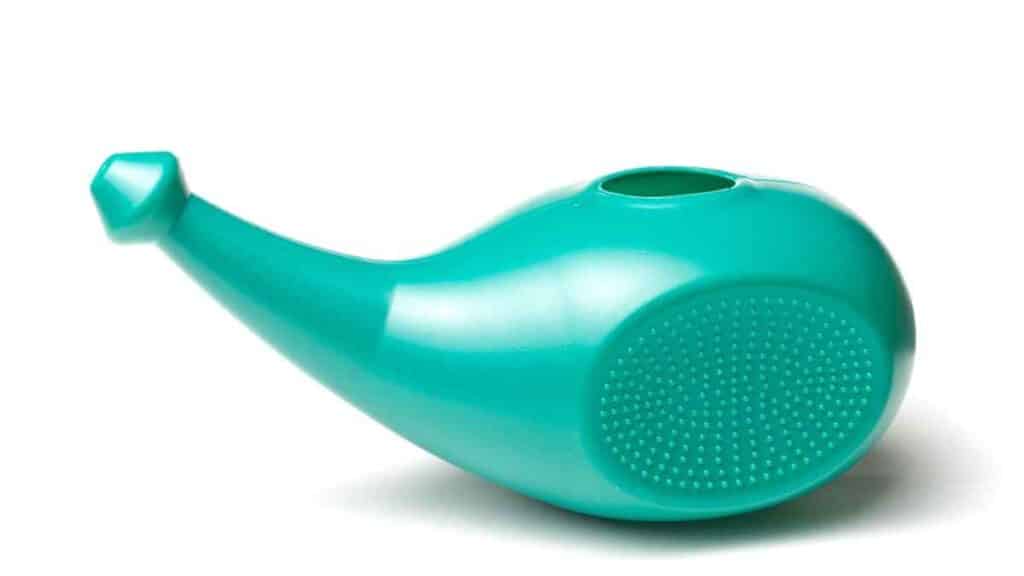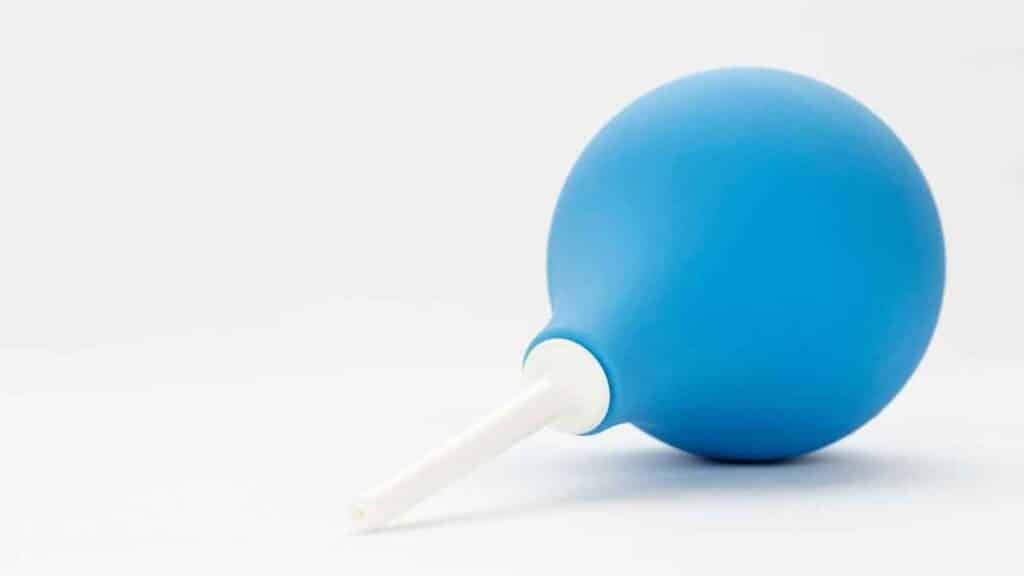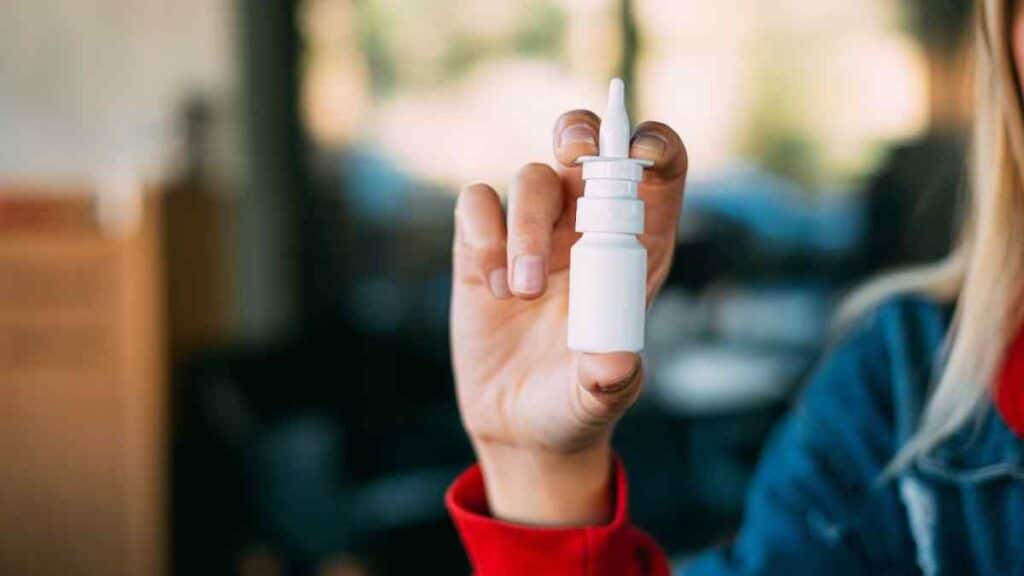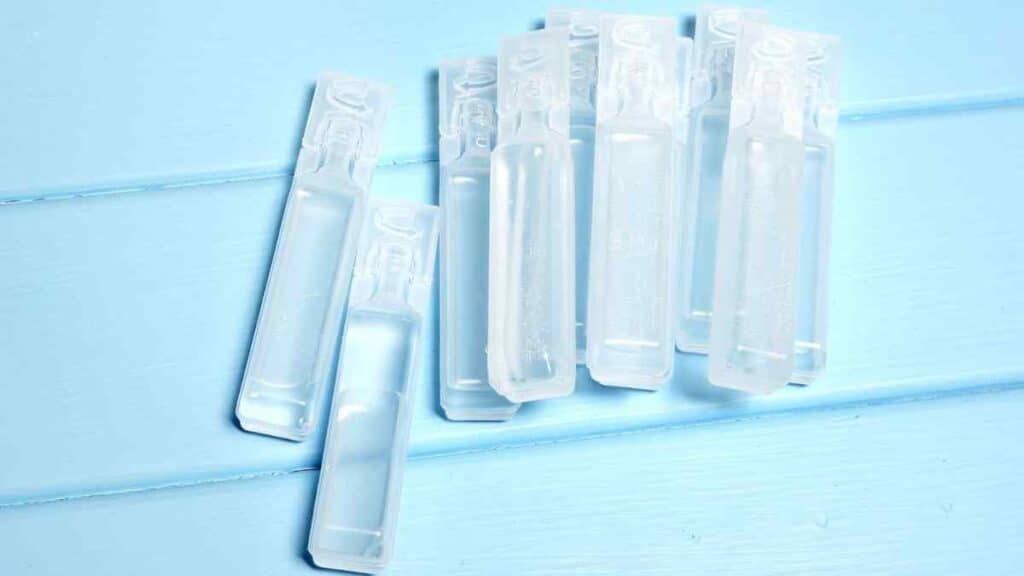A nasal rinse, also known as nasal irrigation, is one of the best ways to help your baby breathe more easily. However, nasal irrigation is not as common in babies as in adults. This is because babies have smaller nasal passages and a higher sinus infection risk, so it’s essential to do the sinus rinse correctly.
This article will cover what you need to know about sinus rinsing for babies, including how to properly rinse and how often your baby should have one.
How Does the Nasal Rinse Work
Babies are often subjected to colds, coughs, nasal allergies, and sinus infections. This is because their immune system is still developing, and they do not have the necessary antibodies to fight these illnesses.
When your baby has clogged nasal passages, it can be hard to know what to do. One of the best ways to help them is by doing a sinus rinsing. This can help clear up their congestion and eliminate the mucus causing them to cough.
A saline solution and an irrigation device are used in sinus rinsing to help loosen up the mucus inside your baby’s nasal lining. It helps drain the mucus through their nasal opening instead of clogging up their nasal passages. The saline solution also helps moisturize their nose gently so that they don’t feel as dry and uncomfortable during their colds, allergic rhinitis, and other illnesses.

Does a Nasal Rinse Hurt or Damage the Baby’s Nose?
The short answer is no. Nasal irrigation will not damage or hurt your baby’s nose.
The long answer is that it depends on how you do a nasal wash. If you use too much water pressure, too much saline solution, or if you use it too often, then you might cause some discomfort in your baby’s nasal passages. But if you’re using saline solution and following the package’s directions, there should be no discomfort associated with using nasal irrigation.
Sinus rinsing is designed to be gentle enough for babies, toddlers, and children of all ages. This practice allows you to remove nasal irritants without having to use force. This means you won’t have to worry about hurting your little one when using nasal irrigation on them!
You can also try putting some saline drops in your child’s nostrils before bedtime to help keep them clear throughout the night.
How Do You Know if Your Baby Needs a Nasal Rinse?
As a parent, you want to ensure your baby is healthy and happy. One of the best ways to do this is by keeping your baby’s nasal lining clear of irritants. Some babies have naturally clear nasal passages and don’t need extra help keeping them clean, but others may need extra assistance.
If you think your baby may benefit from saline nasal irrigation, some signs can indicate when a nasal wash is necessary. If your baby has any of these symptoms, then it is time to look into getting your child their first nasal rinse:
-Your baby has clogged nasal passages or has difficulty breathing through the nose.
-Your baby has been diagnosed with allergies, asthma, or regular colds/colds.
-You notice your baby sneezing more than usual or their eyes always tearing up.
-Your baby is having trouble sleeping due to nasal congestion at night.

How to Prepare the Baby for the Nasal Flush
Preparing your baby for nasal rinsing is easy; we’re here to help you do it.
Make Them Feel Comfortable
First things first: it’s essential to know that this will likely be a new experience for your baby. That’s why it’s vital to ensure they’re comfortable in their surroundings before you begin. You can let them rest on a soft, clean surface with a blanket or pillow nearby.
The baby may cry or fuss a little bit when you first begin nasal rinsing. This is normal, and you should continue with the procedure.
If your baby is calm and not crying, you can hold them in your lap or sit down on your chest if they like that position. If they are crying, try holding them in a slightly different position while you’re doing nasal rinsing. It may help!
Ensure They’re Full and Hydrated
Next, you’ll want to ensure they have access to food and water to stay full and hydrated throughout the process. This will help them feel less lightheaded when the flush begins and decrease their chance of discomfort during or after the nasal irrigation.
If possible, try to hold off until after feeding time before starting your nasal flush session—this way, feeding won’t be interrupted by the process or cause any discomfort or anxiety for your little one!
Get Your Nasal Irrigation Devices Ready
Lastly, ensure that you have a towel handy if water drips out of their nasal passage or mouth during the nasal irrigation process. You will also want to ensure that some tissue is nearby for cleanup after the nasal rinsing has been completed.
Nasal Rinsing Devices To Have
Nasal irrigation is a great way to eliminate excess mucus and clear your baby’s nasal passages. Nasal rinsing can also help babies with allergies and colds. But what are the best nasal irrigation devices to use? Here’s a quick rundown:

Neti Pot
The neti pot is an essential irrigation device for doing a nasal wash. It’s worth buying one that’s made from natural materials like earthenware, ceramic, or glass so it feels more soothing to the skin and won’t get hot during use.

Nasal Bulb Syringe
A nasal bulb syringe fills the nasal passage with warm saline, which helps wash out any mucus that may be stuck in the nasal cavity. You’ll also want to use this if they have an allergy, sinus infection, or ear infection, as it will help clear up those symptoms!

Squeeze Bottle
A squeeze bottle is one of the essential nasal irrigation devices to have. It will help you store the saline solution, and you can use it when necessary. The squeeze bottle should be clear to see what’s inside it. The bottle should have a nozzle to help you easily pour out the contents. You can get one from any pharmacy or medical shop near your home.

Nasal Rinse Solution
You can buy distilled or sterile water with salt or a premade solution at the store. But if you don’t have time to go shopping, make your own using 250 ml distilled or sterile water with 1/2 teaspoon of table salt added. Never use tap water. You can use filtered water but make sure to boil it before use.
How to Do a Nasal Rinse for Babies?
When your baby has a cold, you can help her feel better by giving them a nasal rinse. Here’s how to do it!
Step 1
Gently hold your baby’s head in one hand and keep your fingers from being too rough on their face.
Step 2
On the other hand, gently tilt their head back so they can’t see what you’re doing (you don’t want them to freak out).
Step 3
Choose among the nasal rinsing devices you have and fill it with a saline solution. Gently squirt it into one nostril at a time to clear out any mucus in their nasal passage. Move to the other nasal passage accordingly. Do not let go of your baby’s head or move too fast. It can cause discomfort if they’re still getting used to nasal wash.
Step 4
Now you’ve got some saline solution in your baby’s sinuses! You’ll need to do a sinus rinse once every day until things start feeling better for them again.
How Many Times Can You Use the Saline Nasal Rinse Solution?
The saline sinus rinse solution is designed to be used as often as needed. It’s essential to keep your baby’s nasal passages clear so they can breathe freely. Nasal irrigation is the best way to do that.
It’s important to note that the saline solution isn’t a cure-all for allergies or sinus infections. It can help in those situations. However, you should consult a doctor if your baby needs treatment beyond just rinsing their nasal passages out with saline.
The good news is that there are no hard limits on how often you can do nasal irrigation. Make sure to use it every day until their symptoms improve or disappear.

What Should I Look Out for After the Nasal Rinse?
After you’ve done sinus rinsing for your baby, there’s much to think about. What should you do? How can you ensure that a sinus rinse is safe for your child? Here are some things to take note:
1. Make sure your baby’s breathing is okay. If your baby is experiencing difficulty breathing or wheezing, stop the nasal irrigation immediately and call your doctor.
2. If you notice any redness or swelling around your baby’s nose, mouth, or eyes, call your doctor as soon as possible for an appointment to check them out. This is particularly important if there are signs of infection.
3. You should also call your doctor if you notice any bleeding from either side of the nasal passage or inside.
The Role of Post-Nasal Rinse Care and Maintenance
In the blog post, we went through all the critical aspects of nasal rinsing for babies, from understanding how it works, recognizing the symptoms that call for a nasal rinse, making preparations for the process, understanding the ideal tools for nasal irrigation, executing the rinse properly, and monitoring your baby after the rinse. However, one aspect not covered in the blog post is the importance of post-nasal rinse care and maintenance of the nasal irrigation tools.
The proper care for your baby after performing the nasal rinse can make a significant difference in how well your baby will feel afterward, and the maintenance of nasal irrigation tools plays a vital role in ensuring the safety of your little one.
Post-Nasal Rinse Care For Your Baby
After the nasal rinse, you may notice that your baby might be irritable, and this may be natural due to the discomfort they might have felt during the process. In such cases, cuddling or holding your baby could help them calm down. A warm blanket or their favorite stuffed toy could also lend a sense of comfort and security.
Ensure your baby’s nose is clean and free from any leftover saline solution. If necessary, use a soft towel to wipe their nose gently. Watch for any signs of discomfort or irritation, such as sneezing or rubbing their nose, which could indicate that the rinse was not entirely successful.
In the following hours and the rest of the day, monitor your baby for any residual or new symptoms, like difficulty breathing or the persistence of a stuffed nose. If these symptoms persist, it is recommended that you consult with a pediatrician for advice.
Maintaining The Nasal Rinse Tools
The maintenance of your nasal rinse tools is a critical part of this process. Tools must be rinsed and cleaned after each nasal wash to avoid the growth of bacteria or mold, which can potentially cause infections in your baby.
The nasal tools should be rinsed with sterilized or distilled water immediately after use. Any remaining saline solution or mucus can encourage bacterial growth, leading to infections in the subsequent uses.
After rinsing with sterilized water, ensure that you air dry the tools completely before storing them. Moist environments are a hotbed for bacterial growth. Hence, complete drying is crucial in maintaining the cleanliness of the tools.
Moreover, avoid sharing these tools among family members. This helps prevent the transmission of infections from one person to another. Lastly, observe tools regularly for signs of wear and tear and replace them as needed to avoid injuries with broken devices.
Lastly, it’s good to note that saline nasal rinse is very helpful, but it isn’t a cure-all. Always remember to adhere to the advice of your healthcare providers and consult with them regularly about your baby’s health. If you notice unusual reactions or any changes in your baby’s behavior post-rinse, immediately consult your pediatrician.
By following these steps, you can ensure that the nasal rinse procedure is not only beneficial in relieving your baby’s discomfort but also safe as it should be free from risks of infections. Proper care and maintenance of nasal rinse tools are necessary to maximize the effectiveness of this routine and ensure the overall well-being of your baby.

Takeaways
If you’re looking to help your baby’s nasal congestion, try nasal irrigation. Nasal irrigation is handy for newborns and babies who have trouble breathing through their nasal passages. Nasal irrigation can also help to soothe a stuffy nose. They are an easy way to ensure your baby gets the best care possible.
Did this article help you? We’d love to hear from you! Have a question? Let us know in the comments.



